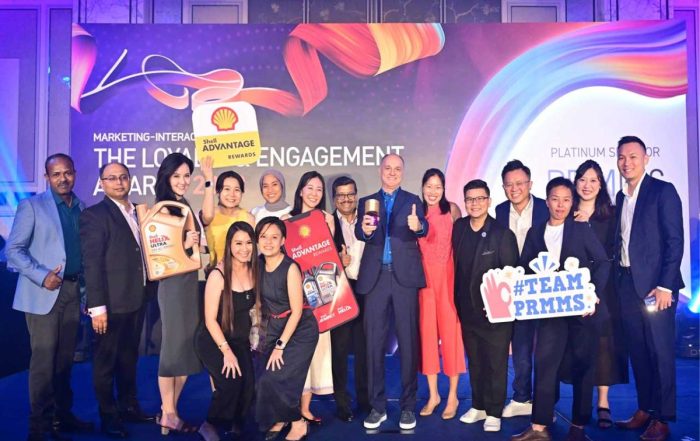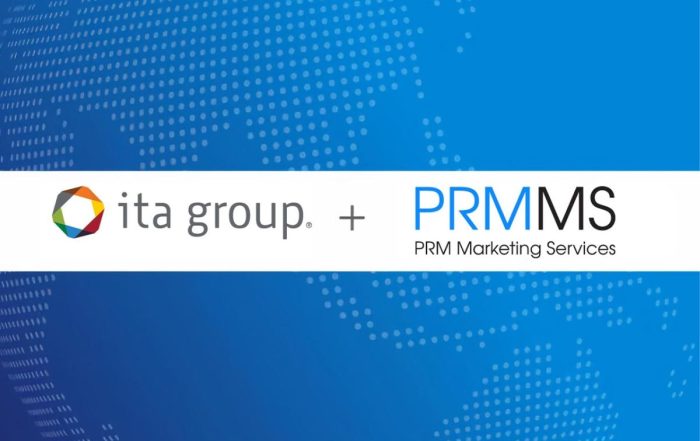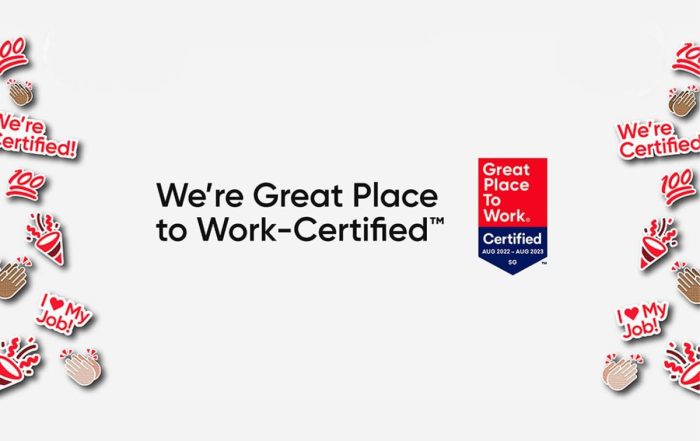2024 and Beyond: Why Agriculture is Embracing PRM Programs
Partner Relationship Management (PRM) programs are an emerging trend in the agriculture industry. These programs use technology and data to strengthen relationships between agricultural companies, retailers, dealers, and farmers.
PRM platforms provide tools to manage loyalty incentives, tailored communications, and data analytics. They help agricultural companies build tighter engagement across their distribution and grower networks. Adoption of PRM programs enables digital transformation for even the most traditional agriculture businesses.
In recent years, agriculture companies have increasingly seen value in implementing PRM strategies. These technologies align well with agriculture’s complex, interlinked supply chains between suppliers, distributors, retailers, and growers. PRM programs allow businesses to leverage the unique data relationships in agriculture to improve loyalty and sales.
Looking ahead, industry analysts expect rapid increases in PRM investment in agriculture. As the digital revolution continues, more companies will adopt tech-driven relationship management. PRM promises to be a key strategy for agriculture businesses to gain competitive advantage in the 2020s.
In this article, we’ll discover:
How PRM Programs Work?
Partner Relationship Management (PRM) programs utilize advanced technologies to drive personalized engagement between agricultural companies, retailers/dealers, and farmers/growers.
At the core of PRM platforms is the ability to uniquely track and identify agricultural products as they move through the supply chain. Seed bags and chemical containers are encoded with unique digital signatures that can be scanned and tracked from manufacturing to end use. This provides visibility into product movement and allows for targeted communications based on purchase data.
Sophisticated data analytics and digital marketing technologies enable ag companies to deliver personalized and relevant content to retailers/dealers and farmers/growers based on their interests and behaviors. For example, a farmer who purchases a specific seed variety could receive tailored communications about optimal planting techniques and complementary chemical products.
By leveraging purchase data and digital channels, PRM programs enable ag companies to identify their most loyal and profitable customers. These individuals can then be incentivized through targeted promotions and rewards programs designed to deepen engagement over time.
The use of tracking, encryption, data analytics, and digital communications allows PRM platforms to revolutionize how ag companies connect with their distribution and grower networks in a personalized and contextually relevant manner. This drives greater loyalty, engagement, and ultimately sales.

Benefits for Agricultural Companies
Partner Relationship Management (PRM) programs provide significant benefits for agricultural companies looking to drive engagement across their supply chain. By implementing a digital PRM solution, agricultural companies can:
1. Drive Retailer, Dealer and Farmer Engagement
PRM programs allow agricultural companies to offer targeted incentives and rewards to retailers, dealers, and farmers. This fosters greater engagement as partners are motivated to meet goals in order to earn rewards.
2. Consolidate Market Engagement
With a centralized PRM program, agricultural companies can align all their partners on shared objectives and incentives. This unified approach leads to more coordinated and optimized market engagement across the board.
3. Increase Loyalty and Incentives
PRM platforms allow agricultural companies to offer personalized incentives and communications tailored to specific partner segments and behaviors. Partners feel valued through relevant rewards, driving greater loyalty over time.
The data-driven approach of PRM programs enables agricultural companies to incentivize desired partner behaviors from farm to table. By digitally managing partner relationships through a centralized system, agricultural companies can transform engagement across their value chain. The result is a consolidated view of the market and increased ability to drive partner performance. As PRM adoption expands, leading agricultural companies will leverage these solutions to strengthen competitive positioning.
Benefits for Retailers and Dealers
Partner relationship management (PRM) programs provide significant benefits for agricultural retailers and dealers. By participating in a PRM program offered by a supplier or manufacturer, retailers and dealers gain access to personalized and targeted digital communications and promotions.
Retailers and dealers receive customized communications based on their business relationship, purchase history, and goals. These personalized messages help drive engagement by focusing on the most relevant products, services, and programs. PRM platforms utilize data and analytics to segment retailers and dealers, enabling suppliers to tailor offers and incentives.
Digital rewards and incentives are a major advantage of PRM programs. Retailers and dealers can earn points, credits, or other benefits for purchasing and promoting specific products. These incentives are tracked and administered digitally through the PRM platform. Suppliers gain insights into which rewards drive the most engagement.
With PRM programs, retailers and dealers may receive exclusive offers, discounts, and promotions for achieving certain sales volumes or growth targets. These incentives aim to motivate continued loyalty and higher purchase levels. The incentives can also encourage retailers to promote or recommend particular products and brands to farmers and growers.
By connecting directly with retailers and dealers through targeted communications and digital rewards programs, agricultural companies can strengthen engagement, increase mindshare, and ultimately drive sales through distribution channels. PRM gives retailers and dealers compelling reasons to partner with suppliers and promote their preferred products.
Benefits for Farmers and Growers
Farmer and grower engagement is critical for agricultural companies to succeed. PRM programs enable companies to better reach and incentivize farmers and growers by providing personalized promotions, loyalty programs, and tailored communications.
Some key benefits PRM programs offer farmers and growers include:
1. Improved engagement from agricultural companies
With PRM platforms, companies can gain data-driven insights into farmer needs and preferences. This allows them to deliver more relevant, timely information and offers. Farmers feel valued through personalized outreach and rewards.
2. Access to personalized promotions and loyalty programs
PRM systems allow agricultural companies to develop targeted incentive programs for farmers. Growers can receive special deals on products and services they use the most. Loyalty programs reward brand commitment over time through points, status tiers, and other benefits.
3. Recognition for brand commitment
PRM programs give farmers visibility into their purchasing history and engagement with a brand. As growers conduct more business with a company, they can achieve elite status, recognition, and rewards. This recognition boosts loyalty.
4. Streamlined experience
With PRM apps and portals, growers have a centralized hub for managing all their agribusiness relationships. This simplifies the experience of finding deals, tracking rewards, and redeeming offers.
By implementing PRM strategies, agricultural companies can digitally transform how they interact with farmers. Growers benefit through more personalized, engaging relationships with the brands they rely on.

PRM in Agriculture Adoption Trends
The agriculture industry is expected to see a major increase in Partner Relationship Management (PRM) program adoption by 2024. As retailers, dealers, farmers, and growers continue to digitalize their operations and interactions, PRM programs provide an immense opportunity for forward-looking agriculture companies to better connect with their distribution networks.
According to industry research, PRM program adoption will rise rapidly over the next two years across the agriculture sector. Companies that harness PRM early on can gain a competitive edge by consolidating and optimizing their partner engagement. With the ability to directly incentivize, reward and communicate with retailers, dealers, and growers at scale, PRM allows companies to drive greater loyalty, brand consistency, and overall performance.
The agriculture companies that leverage PRM programs in the near-term will be best positioned to maximize their position in the 2024 marketplace and beyond. By integrating smart digital marketing and loyalty technologies into their partner networks, agriculture brands can foster deeper engagement across the supply chain. As PRM capabilities grow more sophisticated, companies should increasingly view these platforms as a core component of their go-to-market and distribution strategies.
The coming years will see top agriculture enterprises separate themselves by making PRM central to their partner relationships and market access. With personalized incentives and communications, PRM allows brands to digitally transform their retailer, dealer and grower interactions for the digital age. Agriculture companies that capitalize on PRM’s potential now will drive sustainable competitive advantages as the industry continues adopting these loyalty and marketing technologies
Implementation Best Practices
Agricultural companies looking to implement effective PRM programs should focus on several key best practices:
1. Digitalizing Retailer and Dealer Networks
- Migrate retailers and dealers to digital platforms and apps to enable real-time communication and data collection. This forms the foundation for personalized and targeted incentive programs.
- Leverage AI and machine learning to gain insights from retailer and dealer data to understand their needs, challenges, and motivations. This enables fine-tuning of incentives.
- Build digital profiles of each retailer and dealer to track their engagement across channels. This provides a unified view for targeted incentives.
- Enable retailers and dealers to easily track and redeem incentives digitally through their accounts and apps. This streamlines the experience.
2. Effective Incentive Design
- Incentives should be personalized and relevant to each retailer/dealer. Leverage data insights to determine the optimal incentive mix.
- Balance short term and long term incentive goals. Use a mix of immediate discounts and rewards with longer-term loyalty programs.
- Structure tiered incentives to motivate higher engagement levels. Establish clear objectives and reward levels.
- Offer a diverse incentive portfolio including discounts, rebates, rewards points, trips, events, and more. Cater to different motivations.
- Track incentive performance and continually optimize based on data. Iterate on poor performing incentives.
3. Omnichannel Approach
- Meet retailers and dealers wherever they want to interact – website, app, email, social media, and in-person.
- Maintain incentive program consistency across interaction channels. Allow progress across channels.
- Provide a seamless experience as retailers/dealers switch between channels. Maintain unified profiles and data.
- Enable retailers/dealers to redeem incentives through their preferred channel. Provide flexible options.
- Coordinate messaging and communication across channels. Deliver consistent branding and content.
Challenges and Limitations
Implementing a Partner Relationship Management (PRM) program has some challenges and limitations to consider:
1. Initial Setup Costs
- Developing and launching a customized PRM platform requires upfront investment. Companies need to budget for software costs, integration with existing systems, as well as design and rollout.
- While PRM solutions are available off-the-shelf, agricultural companies will likely need custom development to meet their specific business needs. This development work doesn’t come cheap.
- Companies also need to factor in expenses like training, change management, and addressing any internal resistance or lack of buy-in during the transition.
2. Ongoing Management Overhead
- PRM programs require ongoing staffing to manage the platform, analyze data, and continuously optimize the system. Dedicated personnel represents a real cost.
- As the program evolves, new features or modules may need to be added, creating additional costs down the road.
- Maintaining integrations between the PRM solution and other internal systems takes effort and overhead too.
3. Data Privacy Concerns
- Collecting and managing data on retailers, dealers, and farmers raises potential data privacy issues. Proper consent and transparency is critical.
- Hacking or unintended data leaks containing sensitive information could seriously damage trust in the program and the company overall.
- Local data privacy regulations may impose limitations or requirements around data handling that add complexity.
- Any perceived misuse of data could prompt backlash from participants. Maintaining high ethical standards is imperative.
Proceeding with realistic expectations around these challenges will help ensure a smoother and more successful PRM program implementation. With proper planning and resources, the limitations can be effectively managed.

PRM in Agriculture – The Future Outlook
The future of PRM programs in agriculture looks bright, with expanded capabilities on the horizon leveraging cutting-edge technologies like artificial intelligence, augmented reality, and the Internet of Things.
As PRM platforms incorporate more sophisticated AI and machine learning algorithms, they will gain the ability to analyze ever-growing amounts of data from smart agriculture equipment and provide even more personalized and targeted recommendations and incentives to users. For example, imagine a scenario where soil moisture sensors communicate with the PRM system, allowing it to detect drought conditions in a farmer’s fields and automatically issue a targeted rebate offer for irrigation equipment upgrades.
Augmented reality also presents exciting opportunities to take PRM programs to the next level. AR could allow agriculture retailers to provide virtual demonstrations of equipment to farmers right on their own property, with the PRM system tracking engagement and issuing rewards. Equipment makers could provide customized AR manuals and tutorials tied directly to a farmer’s purchased equipment.
The proliferation of smart agriculture equipment and sensors as part of the Internet of Things will continue generating vast troves of data to feed into PRM platforms. This will enable them to glean deeper insights into equipment usage patterns and refine predictive analytics capabilities. The data can also facilitate features like predictive maintenance notifications and automatic dispatch of service technicians when needed.
In summary, the future of PRM programs in the agriculture industry will hinge on harnessing emerging technologies to deliver ever-more customized and contextual recommendations, incentives and experiences to users. Companies that lead the way in innovating with AI, AR and IoT integration will gain a substantial competitive advantage. The next generation of PRM promises unprecedented personalization and value generation capabilities to strengthen relationships across the agriculture value chain.
PRM programs are an innovative way for agriculture companies to build stronger relationships with their distribution partners and farmers. By providing mobile loyalty programs and digital incentives, companies can more effectively engage retailers, dealers, and growers.
Explore the possibilities with our tailored PRM solutions.












